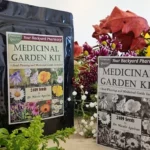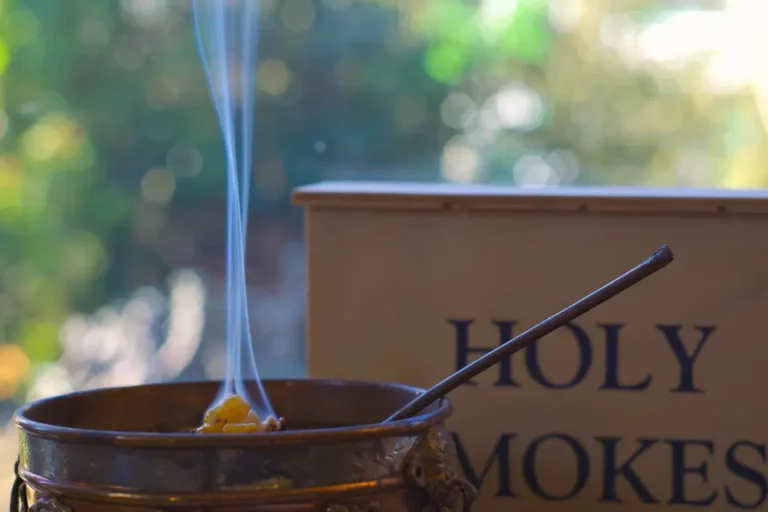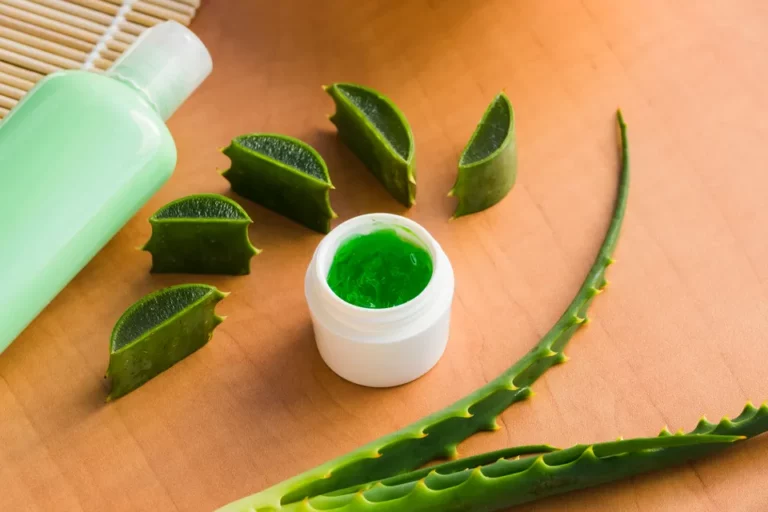How to Make Your Own Natural Remedies with Medicinal Herbs at Home
Medicinal herbs are plants that have beneficial properties for human health. Since ancient times, people have used medicinal herbs to prevent and treat various diseases, as well as to improve physical and mental well-being. Medicinal herbs can be used internally (as infusions, capsules, tinctures, etc.) or externally (as essential oils, creams, gels, etc.).
In this article, we will review 10 medicinal herbs that can help you improve your health and well-being naturally. We will also see how to make your own natural remedies with medicinal herbs at home.
Este artículo también está disponible en Español
Echinacea: the herb that strengthens your immune system

Echinacea is a plant native to North America, where indigenous people used it to treat wounds, snake bites, and other infections. It has immunomodulatory properties, that is, it stimulates the body’s defenses against pathogens. Echinacea works by increasing the production of white blood cells and infection-fighting chemicals.
It can be consumed in the form of infusion, capsules, or tincture. It is recommended to take it at the first symptom of a cold, flu, or urinary infection, and continue the treatment for about 10 days. Echinacea should not be used in people who are allergic to plants in the daisy family, in people with autoimmune diseases, or in taking immunosuppressants.
Lemon Balm: the herb that calms your nerves

Lemon balm is a plant native to Europe and Asia, where it has been used since ancient times to treat nervous, digestive, and skin problems. Lemon balm has sedative, antispasmodic, and antiviral properties.
Lemon balm works by relaxing the central and peripheral nervous system, relieving stress, anxiety, and insomnia. It also helps calm muscle spasms and menstrual pain. In addition, it has an inhibitory effect on the herpes simplex virus, so it can help cure cold sores.
Lemon balm can be consumed in the form of an infusion, essential oil, ointment, or extract. It is recommended to take it before going to bed or in moments of nervous tension. It should not be used in people with hypothyroidism, as it can interfere with thyroid function.
Calendula: the flower that heals your skin

Calendula is a plant native to southern Europe and northern Africa, where it has been used since ancient times to treat skin problems such as wounds, burns, eczema, and acne. Calendula has healing, anti-inflammatory and antiseptic properties. Calendula works by stimulating the regeneration of damaged tissues, reducing inflammation, and preventing infections.
Calendula can be consumed in the form of an infusion, cream, gel, or oil. It is recommended to apply it on the affected area several times a day until healing occurs. Calendula should not be used in people who are allergic to plants in the daisy family, or in pregnant or lactating women.
Chamomile: the herb that relaxes your body and mind

Chamomile is a plant native to Europe and Asia, where it has been used since ancient times to treat digestive, nervous, and eye problems. Chamomile has antispasmodic, anti-inflammatory, and calming properties. Chamomile works by relaxing the muscles of the digestive tract, relieving stomach pain, menstrual cramps, and gas.
It also helps reduce anxiety, insomnia, and irritability. In addition, chamomile has a softening and disinfecting effect on the eyes, so it can help relieve conjunctivitis, styes, and dark circles.
Chamomile can be consumed in the form of an infusion, essential oil compresses, or eye drops. It is recommended to take it after meals or before sleeping. Chamomile should not be used in people who are allergic to plants in the daisy family, or in people who take blood thinners or sedatives.
Yarrow: the herb that stops bleeding and reduces fever

Yarrow is a plant native to Europe and Asia, where it has been used since ancient times to treat hemorrhagic, feverish, and inflammatory problems. Yarrow has hemostatic, febrifuge, and anti-inflammatory properties. Yarrow works by constricting blood vessels and promoting clotting, which helps stop bleeding from wounds, nosebleeds, and hemorrhoids.
It also helps reduce fever and sore throat by stimulating sweating and the elimination of toxins. In addition, yarrow has an anti-inflammatory effect on joints, muscles, and skin, so it can help relieve arthritis, rheumatism, and insect bites.
Yarrow can be consumed in the form of an infusion, tincture, poultice, or ointment. It is recommended to take it or apply it to the affected area several times a day until improvement occurs. Yarrow should not be used in people who are allergic to plants in the daisy family, in people with bleeding problems, or taking blood thinners.
Salvia: the herb that improves your memory and balances your hormones

Salvia, also known as Sage, is a plant native to the Mediterranean, where it has been used since ancient times to treat cognitive, respiratory, and hormonal problems. Sage has nootropic, expectorant, and regulatory properties. Sage works by improving memory and concentration, stimulating brain activity, and preventing cognitive decline.
It also helps clear the airways and relieve coughs, asthma, and bronchitis, by facilitating the expulsion of mucus and having an antiseptic effect. Additionally, sage has a regulating effect on female hormones, so it can help alleviate symptoms of PMS and menopause, such as hot flashes, mood swings, and vaginal dryness.
Sage can be consumed in the form of an infusion, essential oil, capsules, or mouthwash. It is recommended to take or use it in moderation and under medical supervision. Sage should not be used in people with epilepsy, high blood pressure, or kidney or liver disease.
Mint: the herb that freshens your breath and eases your digestion

Mint is a plant native to Europe and Asia, where it has been used since ancient times to treat oral, digestive, and head problems. Mint has cooling, carminative and analgesic properties. Mint works by freshening the breath and fighting the bacteria that cause bad odor and cavities.
It also helps to calm headaches, nausea, and indigestion, by relaxing the muscles of the stomach and intestines and favoring the elimination of gases. Additionally, peppermint has a stimulating effect on the nervous system, so it can help improve mood and energy.
Mint can be consumed in the form of an infusion, essential oil, candies, or chewing gum. It is recommended to take or use it after meals or in times of discomfort. Peppermint should not be used in people with gastroesophageal reflux, peptic ulcer disease, or gallstones.
Lavender: the herb that scents your home and repels insects

Lavender is a plant native to the Mediterranean, where it has been used since ancient times to treat nervous, skin, and environmental problems. Lavender has relaxing, antiseptic and repellent properties. Lavender works by relaxing the nervous system and relieving stress, depression, and insomnia.
It also helps heal wounds, burns, and insect bites, by having a healing and disinfecting effect. In addition, lavender has a repellent effect on insects, so it can help prevent pests and diseases transmitted by them.
Lavender can be consumed in the form of an infusion, essential oil, sachets, or candles. It is recommended to take or use it before sleeping or in moments of emotional stress. Lavender should not be used in people who are allergic to plants in the Labiatae family, or in children under 6 years of age.
Basil: the herb that garnishes your dishes and lowers your blood pressure

Basil is a plant native to Asia and India, where it has been used since ancient times to treat digestive, cardiovascular, and infectious problems. Basil has digestive, hypotensive, and antibacterial properties. Basil works by improving digestion and appetite, by stimulating the production of gastric and bile juices.
It also helps lower blood pressure and cholesterol by dilating blood vessels and preventing the formation of atherosclerotic plaques. In addition, basil has an inhibitory effect on the bacteria that cause oral, respiratory, and urinary infections, so it can help fight them.
Basil can be consumed fresh, dried, in pesto, or in capsules. It is recommended to take it or use it with meals or in cases of hypertension, gastritis, or infections. Basil should not be used in people with bleeding disorders or taking blood thinners.
Thyme: the herb that boosts your immunity and disinfects your wounds

Thyme is a plant native to Europe and Asia, where it has been used since ancient times to treat respiratory, skin, and immune problems. Thyme has expectorant, antiseptic, and immunostimulant properties. Thyme works by increasing the production and expulsion of mucus, which helps clear the airways and relieve coughs, asthma, and bronchitis.
It also helps to disinfect wounds, burns, and fungi, by having a bactericidal and fungicidal effect. In addition, thyme has a stimulating effect on the immune system, so it can help prevent and fight infections.
Thyme can be consumed in the form of an infusion, essential oil, honey, or ointment. It is recommended to take it or use it several times a day in cases of cold, cough, or infected wounds. Thyme should not be used in people with hyperthyroidism, peptic ulcer disease, or allergies to plants in the labia-dee family.
How To Make Your Own Home Remedies with Medicinal Herbs

If you want to make the most of the benefits of medicinal herbs, a good option is to make your own home remedies with them. In this way, you can customize them according to your needs and preferences and save money and resources. Also, making your own home remedies with medicinal herbs is very easy and fun.
You only need a few basic tools, such as a knife, a cutting board, a pot, a strainer, a glass jar, an eyedropper, a label, and a marker. And of course, the medicinal herbs that you want to use.
Here we explain how to prepare some home remedies with medicinal herbs that can be useful for different health problems:
Infusion
Infusion is the simplest and most common method to consume medicinal herbs. It consists of pouring hot water over the herbs and letting them rest for a few minutes. The infusion can be made with fresh or dried herbs, whole or chopped.
The general ratio is one teaspoon of herb per cup of water, but it can be varied according to taste or need. The infusion can be taken hot or cold, alone or with honey, lemon, or milk.
Tincture
The tincture is a liquid extract of medicinal herbs that is obtained by macerating them in alcohol for several weeks. The tincture can be made with fresh or dried herbs, whole or chopped.
The general ratio is one part weed to five parts alcohol, but you can vary it depending on how strong you want it to be. Alcohol can be used of any kind, but it is recommended that it be at least 40 proofs. The tincture can be taken in drops, diluted in water or juice, or applied to the skin.
Essential oil
The essential oil is a concentrated extract of medicinal herbs that is obtained by distilling them with steam. The essential oil can be made from fresh or dried herbs, whole or in pieces.
The general ratio is one part grass to ten parts water, but you can vary it depending on how much you want to get. The essential oil can be used aromatically, inhaling its aroma or diffusing it into the environment, topically, applying it to the skin or hair, or internally, ingesting it with caution and under medical supervision.
Cream
The cream is a cosmetic product that is obtained by mixing vegetable oil with an emulsifying substance and water. The cream can be made with any vegetable oil that you want to use as a base, such as almond oil, olive oil, or coconut oil.
The emulsifying substance can be used of natural origin, such as beeswax or lanolin, or of synthetic origin, such as glycerin or cetyl alcohol. The water can be used distilled or mineral. The cream can be enriched with medicinal herbs, essential oils, vitamins, or natural preservatives, depending on the effect you want to achieve. The cream can be used to moisturize, nourish and protect the skin or hair.
Gel
The gel is a cosmetic product that is obtained by mixing a liquid with a gelling substance. The gel can be made with any liquid you want to use as a base, such as water, aloe vera juice, or apple cider vinegar.
The gelling substance can be used of natural origins, such as agar-agar or xanthan gum, or of synthetic origins, such as carbopol or triethanolamine. The gel can be enriched with medicinal herbs, essential oils, dyes, or natural preservatives, depending on the effect you want to achieve. The gel can be used to refresh, cleanse and tone the skin or hair.
Ointment
The ointment is a cosmetic product that is obtained by mixing vegetable oil with a thickening substance and wax. The ointment can be made with any vegetable oil you want to use as a base, such as almond oil, olive oil, or coconut oil.
The thickening substance can be used of natural origins, such as rice flour or clay, or of synthetic origins, such as Vaseline or petrolatum. The wax can be used of natural origins, such as beeswax or carnauba wax, or of synthetic origins, such as paraffin or microcrystalline wax.
The ointment can be enriched with medicinal herbs, essential oils, pigments, or natural preservatives, depending on the effect you want to achieve. The ointment can be used to protect, smooth, and shine skin or hair.
READ OUR PRODUCT REVIEW:
Ready to Grow your Own Pharmacy at Home?
If you are interested in natural remedies and herbal medicine, you will love the Medicinal Garden Kit. This kit contains the seeds of 10 top medicinal herbs that you can grow in your backyard or balcony. You will also get a comprehensive guide on how to cultivate and use these herbs for various purposes. Read this honest review of the Medicinal Garden Kit and see for yourself why it is such a great product. Click here to access the review and learn more about the kit.
Conclusion
Medicinal herbs are a natural and effective way to improve your health and well-being. We invite you to try these 10 medicinal herbs that you can have at home and that can help you prevent and treat various diseases.
Remember to consult with a health professional before using any medicinal herb and follow their instructions. Also remember to keep medicinal herbs in a dry, cool, and dark place so that they maintain their properties.
And if you liked this article, share it with your friends and family so that they can also benefit from medicinal herbs.







